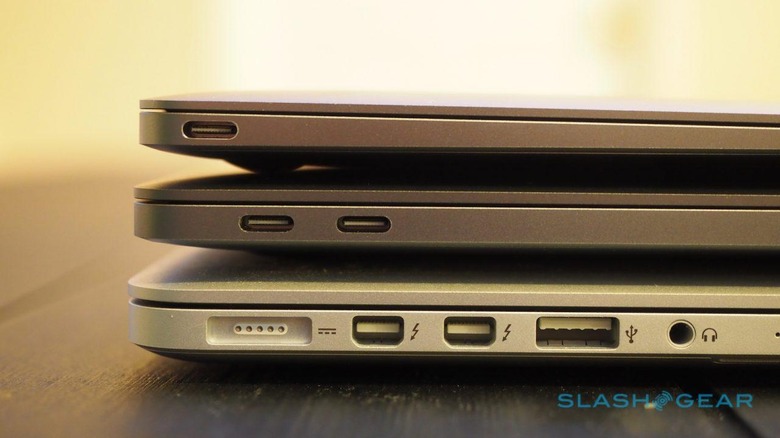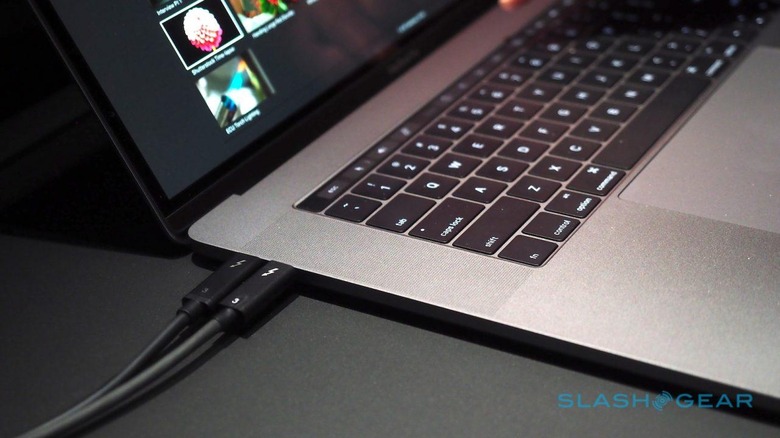The SD Slot Had To Die, Apple's Phil Schiller Insists: Here's Why
Apple's decision to go all-Thunderbolt 3 with the new MacBook Pro is still, a week after the event, causing controversy, and now Phil Schiller has waded in to make the official argument. The decision to drop USB Type-A, HDMI, and other ports in favor of the multi-functional – but decidedly rarer – Thunderbolt 3 has seen many pro-users up in arms, but it's the absence of the SD card slot that has many truly fuming. According to Schiller, Senior Vice President of Worldwide Marketing, it's a slot that'd had its day.
Speaking to the Independent, both just after the new MacBook Pro had been announced and then again a few days later, amid some of the more fiery furore, Schiller proved resolute in Apple's decision. According to the exec, the decision to include an SD reader on the MacBook Pro originally had always been a compromise. Nonetheless, if you're not a fan of dongles and adapters, you probably won't be satisfied.
"One, it's a bit of a cumbersome slot," Schiller points out. "You've got this thing sticking halfway out. Then there are very fine and fast USB card readers, and then you can use CompactFlash as well as SD. So we could never really resolve this – we picked SD because more consumer cameras have SD but you can only pick one. So, that was a bit of a trade-off."

While it's true that, at one point CompactFlash and SD were rivaling technologies in camera storage, that's not so much the case today. Improvements in SD card speed, as well as capacity, has seen CompactFlash sidelined, particularly as camera companies adopt smaller systems like Micro Four Thirds and a similarly smaller memory chip becomes a real advantage. Then again, Schiller is hoping the camera makers themselves will marginalize the missing slot as an issue too.
That's because "more and more cameras are starting to build wireless transfer into the camera," Schiller points out. He's certainly not wrong in that we're seeing cameras spread from the consumer range through to prosumer and professional with built-in WiFi. All the same, the experience can be lacking in comparison to the convenience of taking out a memory card and plugging it into a native port.
For instance, while most of Olympus' recent cameras, like the PEN-F, have WiFi, it's not designed for connecting to a computer. Instead, it works with the company's mobile app for iOS and Android, the concept being that you can shoot images and then quickly share them via social or email. There's actually no official way to connect the camera wirelessly to a laptop, however.

I've used it frequently, and it can be convenient when I'm trying to get photos out quickly at events where sitting down and pulling out a laptop would be too much hassle, but it's a far slower process overall. The speed of a memory card slot, or of a USB 3.0 card reader as I use – complete with USB Type-C adapter – with the 12-inch MacBook, is considerably faster. That's even with the camera downscaling the original resolution considerably before it squirts the pictures over wirelessly.
NOW READ: New MacBook Pro 13" first-look
There are fixes, of course, if it behooved the camera companies to invest in them. Most camera WiFi is 802.11n at best; an 802.11ac radio could be considerably faster. Meanwhile, just as Apple is seemingly provoking the third-party peripheral market to accelerate its Thunderbolt 3 efforts, forcing the SD issue might also encourage camera makers to develop wireless tethering apps for macOS.
If it's prompted no small amount of chatter and disagreement, then Apple doesn't seem to be hurting for orders. According to Schiller, "our online store has had more orders for the new MacBook Pro than any other pro notebook before"; as normal, Apple isn't giving specific sales figures. Some of that is undoubtedly because existing MacBook Pro users, having waited in some cases many years to upgrade old notebooks, can't hold out any longer, but it may well be that the port and card slot limitation isn't quite the storm it currently seems to be.
SOURCE Independent
